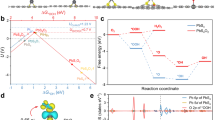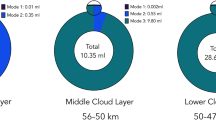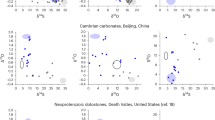Abstract
DURING the continuation of an investigation1 into the factors affecting the resistance of paper to attack by atmospheric pollution, we found that fingerprints were affecting our results. Further investigation suggested that a method for detecting fingerprints on paper could be developed. Fuller details are to be published shortly; but in essence the method consisted of exposing the sample of paper to radioactive sulphur dioxide at a concentration of about 10 p.p.m., followed by autoradiography. Sulphur dioxide was picked up preferentially in the regions contaminated by the fingers, and this caused a greater darkening of the X-ray film. An example of one of the prints obtained is shown in Fig. 1. The specific activity of the sulphur dioxide was about 1 mc./m.mole, the time of exposure about 12 h and the time for autoradiography one week.
This is a preview of subscription content, access via your institution
Access options
Subscribe to this journal
Receive 51 print issues and online access
$199.00 per year
only $3.90 per issue
Buy this article
- Purchase on SpringerLink
- Instant access to full article PDF
Prices may be subject to local taxes which are calculated during checkout
Similar content being viewed by others
References
Hudson, F. L., and Milner, W. D., Paper Tech., 2, (2), 155 (1961).
Godsell, J., J. Forensic Sci. Soc., 3 (2), 79 (1963).
Sakaguchi, M., et al., Second U.N. Conf. on Peaceful Uses of Atomic Energy, 1958, A/Conf. 15/P 1342.
Author information
Authors and Affiliations
Rights and permissions
About this article
Cite this article
GRANT, R., HUDSON, F. & HOOKEY, J. Detecting Fingerprints on Paper. Nature 200, 1348 (1963). https://doi.org/10.1038/2001348a0
Issue date:
DOI: https://doi.org/10.1038/2001348a0
This article is cited by
-
Detection of Latent Fingerprints with 35SO2
Nature (1971)



